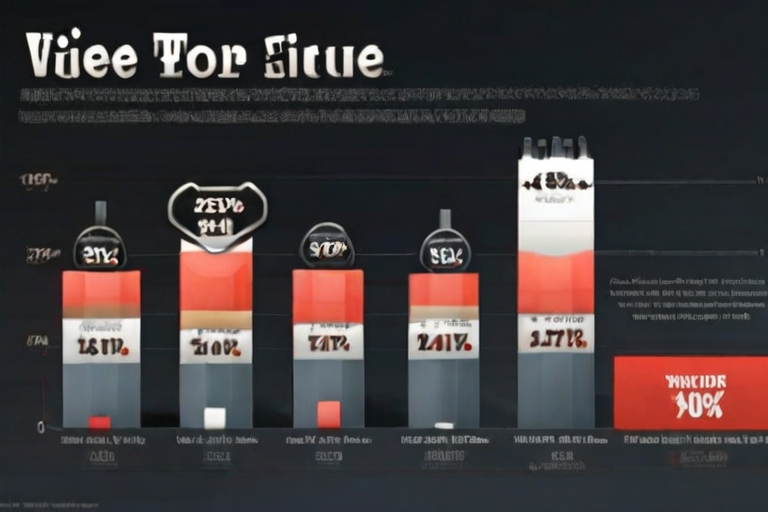Mobile checkout optimization strategies are crucial for enhancing SEO performance in today’s e-commerce landscape. An efficient mobile checkout process not only improves user experience but also positively influences search engine rankings. At Metrics Rule, we emphasize the importance of mobile usability, as optimizing this aspect can lead to better SEO outcomes and increased conversions. In this article, we will explore various best practices that e-commerce business owners, digital marketers, and web developers can implement to boost their mobile checkout efficiency while benefiting their overall SEO strategy.
Significance of Mobile Optimization for E-commerce
Mobile optimization is essential for e-commerce websites because it ensures a seamless user experience on small screens. With more consumers shopping on mobile devices, an optimized mobile checkout experience can significantly enhance conversion rates. Factors that influence mobile usability include website speed, navigation simplicity, and overall design responsiveness. These elements directly affect user experience and, in turn, impact search engine rankings. Studies show that mobile optimization strategies can help businesses improve their visibility on platforms like Google and Bing. By 2025, it is expected that nearly 73% of e-commerce sales will occur on mobile devices, demonstrating the necessity of adapting to mobile user needs.
Key Features for Mobile Usability in E-commerce
To enhance mobile usability in e-commerce, businesses should focus on key features like fast loading speed, easy navigation, and a user-friendly checkout process. Mobile checkout experiences should be designed to minimize steps and reduce form fields, providing a more streamlined process for users. Research shows that websites optimized for mobile are more likely to rank higher in search engine results, ensuring that potential customers can easily find them. A well-optimized mobile site enhances customer satisfaction by providing reliability and efficiency, encouraging repeat visits and boosting sales, as expert reviews and performance data reveal.
Key Components of an Effective Mobile Checkout
To ensure a seamless mobile checkout process, critical elements include simplicity, clarity, and speed. Essential features such as a streamlined interface significantly improve user experience. Businesses can implement best practices like minimizing the number of input fields to three or four, enabling autofill options for returning customers, and ensuring that the mobile checkout forms are easy to navigate. Testing and gathering user feedback on these forms help in refining usability, enhancing the overall mobile checkout process, and ensuring greater transaction efficiency.
Best Practices for Mobile Checkout Form Design
Designing user-friendly forms for mobile checkout requires a focus on speed and usability. Best practices include limiting the number of fields, using clear labeling, and making buttons large enough for comfortable use on mobile devices. Each form should be designed to offer an optimized experience, allowing users to complete their purchases quickly. Additionally, incorporating features like one-click payments can significantly boost conversion rates. These design strategies not only enhance the mobile checkout process but also contribute positively to e-commerce SEO, ensuring that businesses rank higher on search engines.

Importance of Page Loading Speed for Mobile Checkouts
Page loading speed significantly impacts SEO for mobile checkouts by affecting both search engine rankings and user engagement. Google considers loading speed an essential factor in its rankings. If a site loads slowly, users are likely to abandon their carts, directly influencing conversion rates. Research shows that even a one-second delay in loading time can lead to a decrease in conversions by up to 20%. Therefore, optimizing page loading speed not only enhances SEO performance but also improves the overall user experience, encouraging more visitors to complete their purchases.
Best Practices for Optimizing Page Loading Speed
To achieve optimal page loading speed, e-commerce businesses should implement several best practices. These include compressing images, leveraging browser caching, and minimizing the use of heavy scripts. A study indicates that the ideal loading time for mobile websites is under three seconds. Tools like Google PageSpeed Insights can provide valuable analysis and recommendations for enhancing speed. Additionally, ensuring a mobile-friendly design can further support faster loading times and improve SEO performance, making it vital for any online retailer aiming for success in the competitive e-commerce landscape.
Statistical Insights on Checkout Process Performance
- 62% of mobile users abandon their carts if the checkout process is too complicated.
- Mobile transactions account for over 54% of e-commerce sales.
- 95% of consumers prefer a simplified, single-page checkout experience.
- Mobile webpage load time should be under 3 seconds for optimal conversion rates.
- 66% of online shoppers use mobile devices for purchases weekly.
- Cart abandonment rates can drop by up to 35% with optimized mobile checkouts.
- Over 70% of customers return to complete their purchase if they receive a reminder email.

Mobile-First Design Principles to Enhance User Experience
Mobile-first design principles are essential for enhancing user experiences on e-commerce sites. These principles focus on creating intuitive interfaces that prioritize mobile users. For example, optimizing button sizes for touch and simplifying navigation can greatly improve usability. Reviews from users often highlight how a reliable mobile design makes shopping easier and more enjoyable. Moreover, features like fast loading times and clear product images not only enhance user experience but also positively impact SEO performance. Ensuring that your e-commerce site is designed mobile-first can lead to improved search engine rankings and a better overall experience for customers.
Key Features of Effective Mobile-First Design
Effective mobile-first design includes features that significantly enhance user experience and directly correlate with SEO success. A sturdy layout that adapts seamlessly to various screen sizes is crucial. Additionally, simplified navigation helps users find products quickly and easily. With mobile devices expected to account for over 70% of e-commerce traffic by 2025, it’s essential to focus on design elements that improve loading speed and interactivity. By regularly testing and optimizing these elements, e-commerce businesses can ensure they meet user expectations and enhance their SEO performance.

Impact of Secure Payment Options on Trust and Rankings
Secure payment options are vital in enhancing customer trust during mobile checkout. They provide users with a sense of reliability when entering sensitive information. Using trusted payment gateways like PayPal, Stripe, or Apple Pay can directly boost customer confidence, which increases overall conversion rates and can lead to improved SEO rankings. Research shows that customers prefer sites that offer secure payment solutions, resulting in fewer cart abandonments and better user experience.
Top Secure Payment Methods and Their Benefits
Several secure payment methods enhance the mobile checkout experience for e-commerce websites. Payment gateways like PayPal, Square, and Stripe are widely recognized for their security features and ease of use. These options not only encrypt user data but also provide built-in fraud detection features, ensuring transactions’ safety. When customers trust the security of their payment methods, they are more likely to complete their purchases, which improves conversion rates and positively influences SEO performance.
Key Advantages of Streamlined Mobile Transactions
- Improved user experience leads to higher customer satisfaction ratings.
- Enhanced usability helps boost search engine rankings for mobile sites.
- Higher conversion rates occur with frictionless checkout flows.
- Optimized checkout processes can lower cart abandonment rates significantly.
- Faster mobile transactions positively impact website load times.
- Effective checkout design increases brand loyalty and repeat purchases.
- Better performance on mobile can generate more organic traffic and attract new users.

Setting Up Analytics for Optimizing Mobile Checkouts
Tracking essential metrics is crucial for mobile checkout optimization. Key performance indicators (KPIs) include conversion rates, cart abandonment rates, and user engagement metrics. Using tools like Google Analytics, e-commerce businesses can gather data to analyze how customers interact with their mobile checkout process. This data can reveal bottlenecks and areas for improvement, ultimately helping to enhance the e-commerce user experience and boost SEO performance. Additionally, reliable data-driven insights enable businesses to test different checkout strategies, ensuring a seamless customer experience that contributes to better rankings on search engines.
Leveraging Data Analytics to Enhance Mobile Checkout Performance
Leveraging data analytics for mobile checkout performance can significantly improve overall e-commerce effectiveness. By regularly reviewing analytics, businesses can identify trends and pain points that affect conversion rates. For example, understanding where customers drop off during the checkout process allows companies to make targeted improvements. Implementing proven checkout optimization strategies not only enhances user satisfaction but also contributes positively to SEO performance metrics. Therefore, ensuring that the checkout process is user-friendly and efficient is essential for driving higher sales and improving search visibility.
User Engagement Metrics and Their SEO Influence
User engagement metrics directly influence SEO rankings. Key metrics include bounce rates, session duration, and user interactions. A high bounce rate indicates that visitors leave your site quickly, which can harm your rankings. Conversely, longer session durations usually signal that users find your content engaging. Mobile checkout experience plays a critical role in these metrics. A streamlined, user-friendly checkout process can reduce bounce rates and improve session durations. Thus, enhancing the mobile checkout experience is essential for boosting user engagement and, by extension, SEO performance.
Understanding Bounce Rates in Mobile Checkout Context
Bounce rates represent the percentage of visitors who leave your site after viewing only one page. In the mobile checkout context, high bounce rates could signify that users encounter frustrations or difficulties during the process. Research indicates that nearly 70% of shoppers abandon their carts due to complicated checkout experiences. If mobile checkout is seamless, it enhances user experience, leading to higher user engagement metrics. Metrics like these are vital for e-commerce success. Metrics Rule in Vancouver focuses on improving mobile strategies to boost SEO through better customer experiences.
Comparing Brands and Their Checkout Experiences
- Amazon offers one-click purchasing but may overwhelm users with options.
- Walmart provides a user-friendly experience, but some users may encounter app glitches.
- Target emphasizes simplicity, enhancing overall customer journey through quick checkouts.
- Best Buy boasts strong tech support, though inventory issues can frustrate shoppers.
- Shopify powers numerous e-commerce sites, allowing tailored checkout experiences for different brands.
- eBay’s bidding system complicates checkout but provides unique deals that attract users.
- Many retailers target millennials and Gen Z who demand quick, efficient purchasing methods.
Utilizing Customer Insights for Checkout Improvement
Customer insights play a vital role in enhancing mobile checkout processes. By collecting and analyzing customer feedback, businesses can identify pain points in their mobile checkout systems. This information helps e-commerce owners make informed decisions on optimizing the user experience. Proven methods such as surveys and focus groups reveal essential usability issues that need addressing. When businesses implement changes based on customer input, they often see improvements in e-commerce conversion rates and overall SEO performance. Research indicates there’s a strong correlation between a streamlined checkout process and higher search engine rankings.
Tools for Collecting and Analyzing Customer Feedback
Various tools aid in gathering and analyzing customer feedback effectively. Utilizing tools like Google Analytics provides insights into user behavior during the checkout process. Heatmaps can also guide businesses in understanding how customers navigate their mobile site. Incorporating customer reviews into your strategy offers a wealth of information about the user experience. These feedback mechanisms enhance mobile checkout optimization by ensuring they address common issues effectively. With the right analysis, businesses can create a reliable checkout experience that boosts efficiency and conversion rates.
